The Elder Scrolls Online – Review
by Mark
|
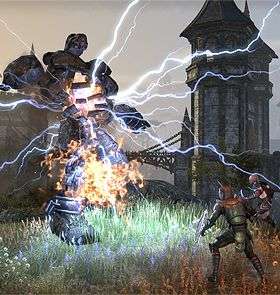 Making the move into the realm of the MMORPG is a risky and expensive business. Typically the major players will only move forward to create a massively multiplayer online game if it’s set within an intellectual property they trust will draw in the loyal fanbase. Star Wars: The Old Republic, Star Trek Online, and DC Universe Online are prime examples of this but, despite attracting massive initial player numbers, each and every one has struggled to keep those gamers loyal and interested.
Making the move into the realm of the MMORPG is a risky and expensive business. Typically the major players will only move forward to create a massively multiplayer online game if it’s set within an intellectual property they trust will draw in the loyal fanbase. Star Wars: The Old Republic, Star Trek Online, and DC Universe Online are prime examples of this but, despite attracting massive initial player numbers, each and every one has struggled to keep those gamers loyal and interested.
The Elder Scrolls series is another example of on such intellectual property; Skyrim was one of the biggest-selling games of all time, but have ZeniMax Online Studios and Bethesda done enough to keep them from dwindling away and to avoid the move to free to play? It’s far too early to tell, given that it has only been live for a month, but in that time Bethesda and ZeniMax have had to continuously battle against issues often seen in online games, leading to lengthy downtime.
The Elder Scrolls Online (ESO) is set around one thousand years before the start of Skyrim. The Ruby Throne – the seat of the Empire – lies empty and all of Tamriel has broken into war. Three factions form – the Daggerfall Covenant, Aldmeri Dominion, and Ebonheart Pact – and each battles for control of Cyrodiil to crown their own Emperor. As a player you will have to choose a side in this war, but this is only one small part of the story.
Once you’ve created your character from one of the nine standard Elder Scrolls playable races (ten, if you have the collector’s edition) and four classes, the game opens as you wake in a prison cell within the plane of Oblivion known as Coldharbour. Your essence is, quite literally, trapped here following your sacrifice at the hands of a High Elf necromancer. You are soon set free by a mysterious apparition known as The Prophet, voiced by Michael Gambon. It soon becomes apparent that you are no ordinary mortal, but are in fact one known as The Soulless, a prophesied champion. Coldharbour is the realm of the Daedric Prince Molag Bal and it is his aim to forcibly combine mortal plane of Mundus with Coldharbour, in order to rule both.
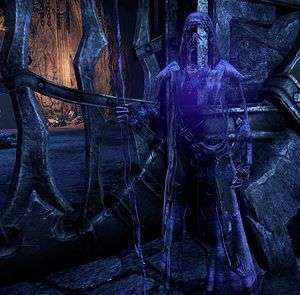 With the support of the Prophet the player then journeys across Tamriel, recruiting allies and taking down the agents of Bal’s mortal death cult. It sounds like a story any Elder Scrolls fan would love – a lone hero with a prophesied future out to stop a big bad. It does however lose a little weight in the MMO environment where there are a couple hundred other Vestiges running around.
With the support of the Prophet the player then journeys across Tamriel, recruiting allies and taking down the agents of Bal’s mortal death cult. It sounds like a story any Elder Scrolls fan would love – a lone hero with a prophesied future out to stop a big bad. It does however lose a little weight in the MMO environment where there are a couple hundred other Vestiges running around.
I personally found the story a little difficult to follow through the first ten levels, but it does open up and become a little more gripping as you head towards the level cap. It all feels a bit rushed; from fleeing Coldharbour at the beginning you are very quickly heading back there time and again to rescue people or sabotage Molag Bal’s plans. If you can put this aside though the storyline is quite enjoyable, although I personally found some of the side mission storylines far more interesting.
Each faction has this constant stream of side missions as you begin to explore each area. In fact exploration becomes a major element of gameplay as you find yourself tracking down areas of interest in order to complete the side missions and level up. Much like Skyrim and Oblivion, key areas of interest appear on your compass as an outline. As you approach these, mission markers appear and you have to then search around the site to find the quest giver. Generally these are all fairly straight forward and you’ll often find a person standing in the road crying out for help. While it’s very similar to its predecessors, it lacks the random element of the large open single player games so you won’t be approached by a thief who wants you to hold his shield as he runs away or bump in to an Orc who only wants a good death. Beyond the regional side missions you also have a quest line for each the three guilds, Mage, Fighter, and the Undaunted – a group of adventurers similar to The Companions from Skyrim.
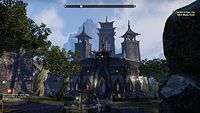 |
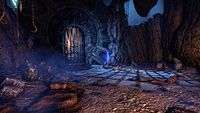 |
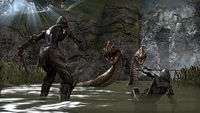 |
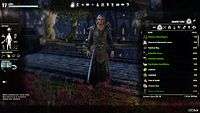 |
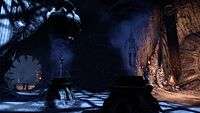 |
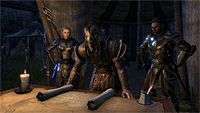 |
Exploration is very much the name of the game and you will find yourself falling out of the levelling curve if you don’t take the time to explore every location and complete side missions. The key difference to the single player Elder Scrolls games is that there is no scaling here and you will find yourself discovering areas that are way beyond you.
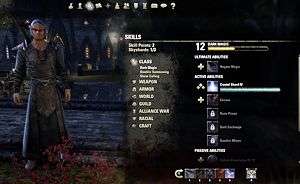 The use of abilities in combat increases their level, eventually unlocking a morph that allows you to augment what that ability does, such as increasing the area of effect or reducing its stamina cost. To unlock new abilities and apply skill morphs you have to gain Skill Points, acquired through levelling up and searching for ‘sky shards’, hidden magical items which happen to find themselves in a variety of different locations. Each area has a number of these sky shards with clues to their location given in the achievement tracker, leading to the player having to explore each region thoroughly.
The use of abilities in combat increases their level, eventually unlocking a morph that allows you to augment what that ability does, such as increasing the area of effect or reducing its stamina cost. To unlock new abilities and apply skill morphs you have to gain Skill Points, acquired through levelling up and searching for ‘sky shards’, hidden magical items which happen to find themselves in a variety of different locations. Each area has a number of these sky shards with clues to their location given in the achievement tracker, leading to the player having to explore each region thoroughly.
As you progress, the skill trees begin to open up. Each class – Dragon Knight, Nightblade, Sorcerer and Templar – has three unique skill trees in which to unlock abilities; each weapon has its own individual tree; light, medium and heavy armours have their own passive abilities attached; there are even racial and crafting trees to move through and unlock. If there was ever a positive to be found in this game it’s the huge level of character customisation open to you, and I’ve only mentioned half of the ability trees here. Players can use any weapon and armour combination across all of the classes, meaning that a dual-wielding lightly armoured but agile warrior is a possibility, or even a plate-armour-clad battle mage.
Any combination you can think of will work in combat as long as you have the perfect blend of skills. You can only add five skills to your hotbar at the one time, along with an ultimate ability that becomes your emergency ‘I’ve just pissed off too many bad guys’ button. I personally spent the better half of my time playing through ESO as an armour-clad demon-summoning battle mage and had a reasonably easy time levelling up.
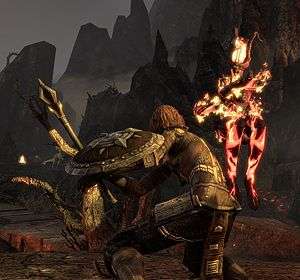 Combat is one area where this game differs from the MMO norm. Generally it is a little quicker, there is less of a dependence on ability refresh timers and the focus seems to be more on hacking, slashing, and dodging over queuing powerful abilities. As such, combat becomes more about your skill with the mouse click and your ability to keep an eye out for combat notifications, blocking when you see the flashing attack effect, or dodging when you see the big red marker on the ground.
Combat is one area where this game differs from the MMO norm. Generally it is a little quicker, there is less of a dependence on ability refresh timers and the focus seems to be more on hacking, slashing, and dodging over queuing powerful abilities. As such, combat becomes more about your skill with the mouse click and your ability to keep an eye out for combat notifications, blocking when you see the flashing attack effect, or dodging when you see the big red marker on the ground.
While this works well in third person, the game is based on the Elder Scrolls series and many players may want to try first-person mode. Unfortunately, in first person, these combat effects are difficult to see. Creatures can get right in your face meaning combat effects such as the attack charge-up may be out of shot.
When played in third-person mode, as with most MMORPGS, the combat works incredibly well. In Player Vs Player the focus on main-weapon hack-and-slash evens the playing field incredibly. Combat between two players becomes less about who has the best class or powerful abilities and more about who is quicker off the mark to block attacks, stun, and strike back.
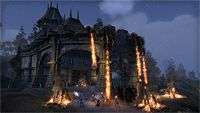 |
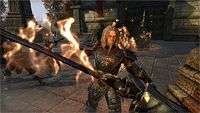 |
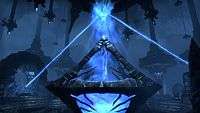 |
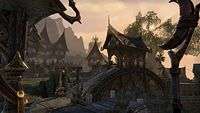 |
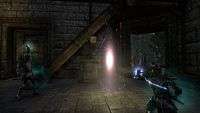 |
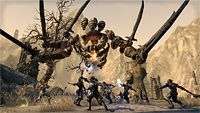 |
Crafting is an incredibly important part of the Elder Scrolls games, and ESO is no different. Much like Skyrim, you will have access to all crafting trees, eventually specialising in one particular area of interest. Resource nodes are harvested throughout the world and put to use creating new items. To craft an item you first have to select the base item, the style, the type of resource used to create it, and any available bonuses. These are unlocked by researching higher-level items using real-world-time research timers. Yes, in an inspired move, ZeniMax require you to wait 6+ hours to research an item. I’m still not quite sure why they thought this was a reasonable feature but it led me to forgetting to research anything after a while.
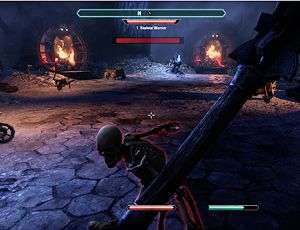 On reaching level ten, the Player vs Player elements of the Elder Scrolls Online come in to play. PvP takes place in Cyrodiil as each faction battles over the Elder Scrolls, aiming to seat their highest-ranking player on the Ruby Throne, and with that ZeniMax have essentially created a PvP space that covers the entirety of the game world from Oblivion. The mechanics will be familiar to players of Dark Age of Camelot and Warhammer: Age of Reckoning; armies march from their central strong hold taking over forts, farms, and temples. Siege combat is pretty commonplace and is fairly well done here; players can purchase and build trebuchet, ballista, and rams to tear down enemy fortifications, and both the UI and mechanics of each work really well.
On reaching level ten, the Player vs Player elements of the Elder Scrolls Online come in to play. PvP takes place in Cyrodiil as each faction battles over the Elder Scrolls, aiming to seat their highest-ranking player on the Ruby Throne, and with that ZeniMax have essentially created a PvP space that covers the entirety of the game world from Oblivion. The mechanics will be familiar to players of Dark Age of Camelot and Warhammer: Age of Reckoning; armies march from their central strong hold taking over forts, farms, and temples. Siege combat is pretty commonplace and is fairly well done here; players can purchase and build trebuchet, ballista, and rams to tear down enemy fortifications, and both the UI and mechanics of each work really well.
PvP combat against other players can be frantic, and in a mash of 100 players it is often impossible to keep track of a single target, with many players just randomly firing all their abilities in the hope of killing something. The Elder Scrolls also play a part in PvP acting as faction-wide buffs if your team can return the scroll to a temple.
Surprisingly PvP in Elder Scrolls Online is fairly enjoyable. The siege combat works well and combat, while hectic, is reasonably good if you play tactically. Once you hit the level cap it can become very easy to just live in Cyrodiil, constantly at war with your neighbours; the area is that large and, honestly, who doesn’t want to become the Emperor? If you do manage to make it to those lofty heights you’ll even get another set of abilities to play with for a short time until you are knocked from your throne. Failing that, you could just sit on top of a castle and look out over Cyrodiil.
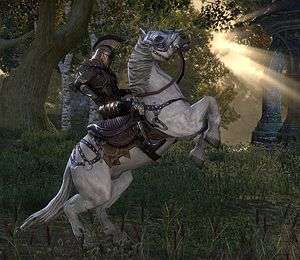 The presentation is beautiful, although perhaps not on the same level as Skyrim, but visually it is stunning. The environments range from Skyrim in the north to the Summerset Isles in the south, and everything is so beautifully put together. ZeniMax have gone for a pulled-back UI, where the action bar and other UI features draw back from the centre of the screen giving this wide cinematic view of the fantastic vistas.
The presentation is beautiful, although perhaps not on the same level as Skyrim, but visually it is stunning. The environments range from Skyrim in the north to the Summerset Isles in the south, and everything is so beautifully put together. ZeniMax have gone for a pulled-back UI, where the action bar and other UI features draw back from the centre of the screen giving this wide cinematic view of the fantastic vistas.
Animations, however, particularly during combat, can be a little off. Sword swings look massively wide; spell charges on staffs can look a little off, or hang, causing you to be stuck in the one attack animation while you run around. These may be small bugs but when playing in third person mode they look terrible.
As mentioned previously, making the move in to the realm of the MMORPG is both risky and expensive, and if you fail to capture the essence of what makes your IP or series great, you may end up with a really expensive ghost town. It’s too early to tell with The Elder Scrolls Online, but ZeniMax have made a great game. There are elements here that are unique, some maybe not so much, but all pull together to create an incredibly decent example of the linear World Of Warcraft-style MMORPG. Sadly though, this has nothing of the magic of the Elder Scrolls games; it’s your standard MMO wearing a really well made Elder Scrolls coat.
Pros- A great MMORPG
- Beautify crafted world
- Enjoyable PvP experience
- Lore by the bucket load
- Huge amount of character customisation
- A poor Elder Scrolls game
- Lack of random encounters
- Storyline can be a struggle to get in to
- Lengthy regular downtime
The Elder Scrolls Online is a game with no soul. As an example of an massively multiplayer online game it’s incredibly well put together. Sure, there are bugs and unfortunately some lengthy down time since it went live but generally speaking I have very few complaints about the quality of the mechanics or the visuals. As an Elder Scrolls game, however, it’s just so flat. The lore is there, tons of the stuff, if you enjoy reading the books and diving in to the history you can spend (according to Bethesda) thirty-two hours just reading.
However, if you go in to this game expecting a multiplayer version of Skyrim you are going to be sorely disappointed. It doesn’t stand up in terms of visuals or even just the randomness. Don’t expect to just happen across a quest, everything is spoon fed.
If you want to burn time in a beautiful MMO surrounded by hundreds of other like-minded individuals, put your money in to Elder Scrolls Online. If you want to play the next great Elder Scrolls game, best hold off until the follow-up to Skyrim comes out.
Last five articles by Mark
- I Have A Problem
- Total War: Warhammer - Review
- Rainbow Six Siege - Review
- Mordheim: City of the Damned - Review
- Star Wars: Battlefront - Review

















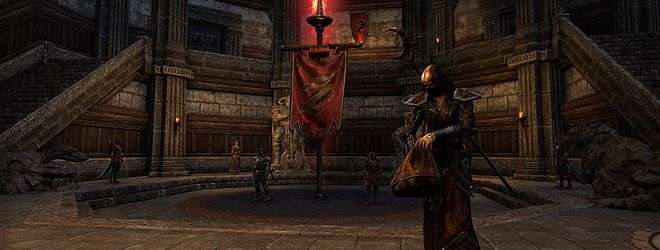
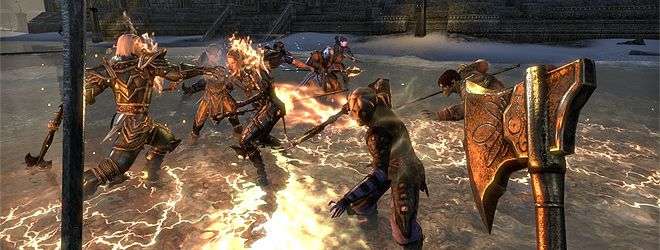
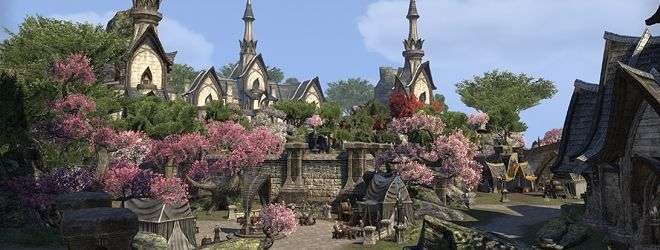






There are no comments, yet.
Why don’t you be the first? Come on, you know you want to!